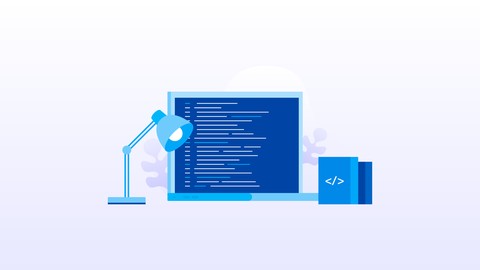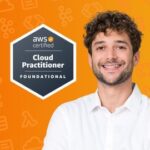
Applied Unsupervised Learning with R
Applied Unsupervised Learning with R, available at $59.99, has an average rating of 4.64, with 39 lectures, 6 quizzes, based on 7 reviews, and has 57 subscribers.
You will learn about Implement clustering methods such as k-means, agglomerative, and divisive Write code in R to analyze market segmentation and consumer behavior Estimate distribution and probabilities of different outcomes Implement dimension reduction using principal component analysis Apply anomaly detection methods to identify fraud Design algorithms with R and learn how to edit or improve code This course is ideal for individuals who are Applied Unsupervised Learning with R is designed for business professionals who want to learn about methods to understand their data better, and developers who have an interest in unsupervised learning. It is particularly useful for Applied Unsupervised Learning with R is designed for business professionals who want to learn about methods to understand their data better, and developers who have an interest in unsupervised learning.
Enroll now: Applied Unsupervised Learning with R
Summary
Title: Applied Unsupervised Learning with R
Price: $59.99
Average Rating: 4.64
Number of Lectures: 39
Number of Quizzes: 6
Number of Published Lectures: 39
Number of Published Quizzes: 6
Number of Curriculum Items: 45
Number of Published Curriculum Objects: 45
Original Price: $199.99
Quality Status: approved
Status: Live
What You Will Learn
- Implement clustering methods such as k-means, agglomerative, and divisive
- Write code in R to analyze market segmentation and consumer behavior
- Estimate distribution and probabilities of different outcomes
- Implement dimension reduction using principal component analysis
- Apply anomaly detection methods to identify fraud
- Design algorithms with R and learn how to edit or improve code
Who Should Attend
- Applied Unsupervised Learning with R is designed for business professionals who want to learn about methods to understand their data better, and developers who have an interest in unsupervised learning.
Target Audiences
- Applied Unsupervised Learning with R is designed for business professionals who want to learn about methods to understand their data better, and developers who have an interest in unsupervised learning.
Starting with the basics, Applied Unsupervised Learning with R explains clustering methods, distribution analysis, data encoders, and features of R that enable you to understand your data better and get answers to your most pressing business questions.
This course begins with the most important and commonly used method for unsupervised learning – clustering – and explains the three main clustering algorithms – k-means, divisive, and agglomerative. Following this, you’ll study market basket analysis, kernel density estimation, principal component analysis, and anomaly detection. You’ll be introduced to these methods using code written in R, with further instructions on how to work with, edit, and improve R code. To help you gain a practical understanding, the course also features useful tips on applying these methods to real business problems, including market segmentation and fraud detection. By working through interesting activities, you’ll explore data encoders and latent variable models.
By the end of this course, you will have a better understanding of different anomaly detection methods, such as outlier detection, Mahalanobis distances, and contextual and collective anomaly detection.
About the Author
-
Alok Malik is a data scientist based in India. He has previously worked on creating and deploying unsupervised learning solutions in fields such as finance, cryptocurrency trading, logistics, and natural language processing. He has a bachelor’s degree in technology from the Indian Institute of Information Technology, Design and Manufacturing, Jabalpur, where he studied electronics and communication engineering.Bradford Tuckfield has designed and implemented data science solutions for firms in a variety of industries. He studied math for his bachelor’s degree and economics for his Ph.D. He has written for scholarly journals and the popular press, on topics including linear algebra, psychology, and public policy.
-
Bert Gollnick is a Diploma in Aerospace Engineering and has pursued MSc in Economics.
He is also a Data Scientist and has 10 years experience in R. He is also an online trainer for Data Science and Machine Learning.
Course Curriculum
Chapter 1: Introduction to Clustering Methods
Lecture 1: Course Overview
Lecture 2: Installation and Setup
Lecture 3: Lesson Overview
Lecture 4: Introduction to Clustering
Lecture 5: Introduction to Iris Dataset
Lecture 6: Introduction to k-means Clustering
Lecture 7: Introduction to k-means Clustering with in-built Functions
Lecture 8: Introduction to Market Segmentation
Lecture 9: Introduction to k-medoids Clustering
Lecture 10: Lesson Summary
Chapter 2: Advanced Clustering Methods
Lecture 1: Lesson Overview
Lecture 2: Introduction to k-modes Clustering
Lecture 3: Introduction to Density Based Clustering (DBSCAN)
Lecture 4: Introduction to Hierarchical Clustering
Lecture 5: Lesson Summary
Chapter 3: Probability Distributions
Lecture 1: Lesson Overview
Lecture 2: Basic Terminology of Probability Distributions
Lecture 3: Introduction to Kernel Density Estimation
Lecture 4: Introduction to Kolmogorov-Smirnov Test
Lecture 5: Lesson Summary
Chapter 4: Dimension Reduction
Lecture 1: Lesson Overview
Lecture 2: Introduction
Lecture 3: Market Basket Analysis
Lecture 4: Passing through the Data to Find the Most Common Baskets
Lecture 5: Principal Component Analysis
Lecture 6: Lesson Summary
Chapter 5: Data Comparison Methods
Lecture 1: Lesson Overview
Lecture 2: Introduction
Lecture 3: Analytic Signatures
Lecture 4: Comparison of Signatures
Lecture 5: Applying Other Unsupervised Learning Methods to Analytic Signatures
Lecture 6: Latent Variable Models – Factor Analysis
Lecture 7: Lesson Summary
Chapter 6: Anomaly Detection
Lecture 1: Lesson Overview
Lecture 2: Univariate Outlier Detection
Lecture 3: Detecting Anomalies in Clusters
Lecture 4: Contextual and Collective Anomaly
Lecture 5: Kernel Density
Lecture 6: Lesson Summary
Instructors
-
Packt Publishing
Tech Knowledge in Motion
Rating Distribution
- 1 stars: 0 votes
- 2 stars: 0 votes
- 3 stars: 0 votes
- 4 stars: 3 votes
- 5 stars: 4 votes
Frequently Asked Questions
How long do I have access to the course materials?
You can view and review the lecture materials indefinitely, like an on-demand channel.
Can I take my courses with me wherever I go?
Definitely! If you have an internet connection, courses on Udemy are available on any device at any time. If you don’t have an internet connection, some instructors also let their students download course lectures. That’s up to the instructor though, so make sure you get on their good side!
You may also like
- Best Public Speaking Courses to Learn in March 2025
- Best Affiliate Marketing Courses to Learn in March 2025
- Best Email Marketing Courses to Learn in March 2025
- Best Social Media Management Courses to Learn in March 2025
- Best SEO Optimization Courses to Learn in March 2025
- Best Content Creation Courses to Learn in March 2025
- Best Game Development Courses to Learn in March 2025
- Best Software Testing Courses to Learn in March 2025
- Best Big Data Courses to Learn in March 2025
- Best Internet Of Things Courses to Learn in March 2025
- Best Quantum Computing Courses to Learn in March 2025
- Best Cloud Computing Courses to Learn in March 2025
- Best 3d Modeling Courses to Learn in March 2025
- Best Mobile App Development Courses to Learn in March 2025
- Best Graphic Design Courses to Learn in March 2025
- Best Videography Courses to Learn in March 2025
- Best Photography Courses to Learn in March 2025
- Best Language Learning Courses to Learn in March 2025
- Best Product Management Courses to Learn in March 2025
- Best Investing Courses to Learn in March 2025






















